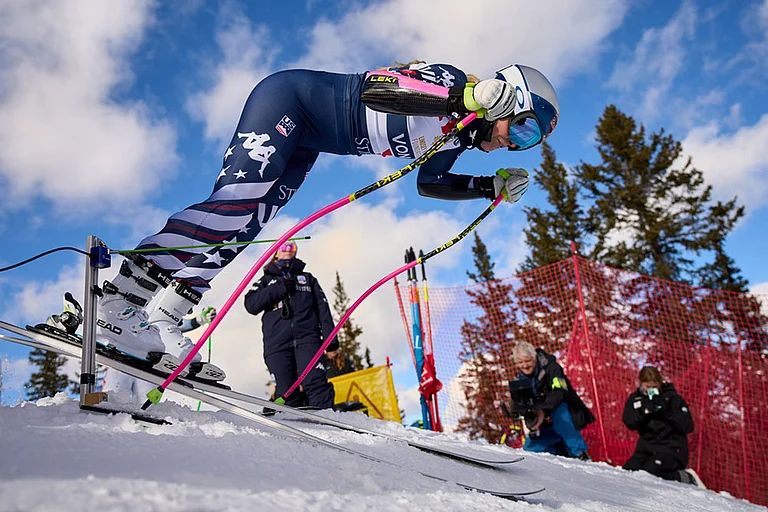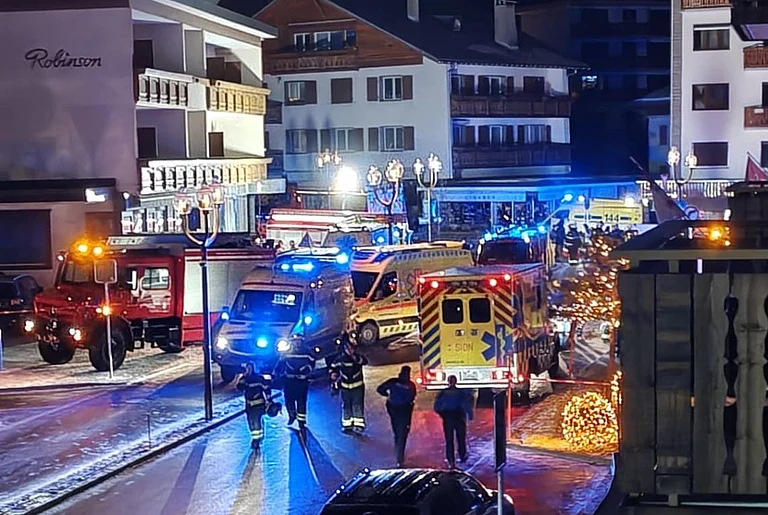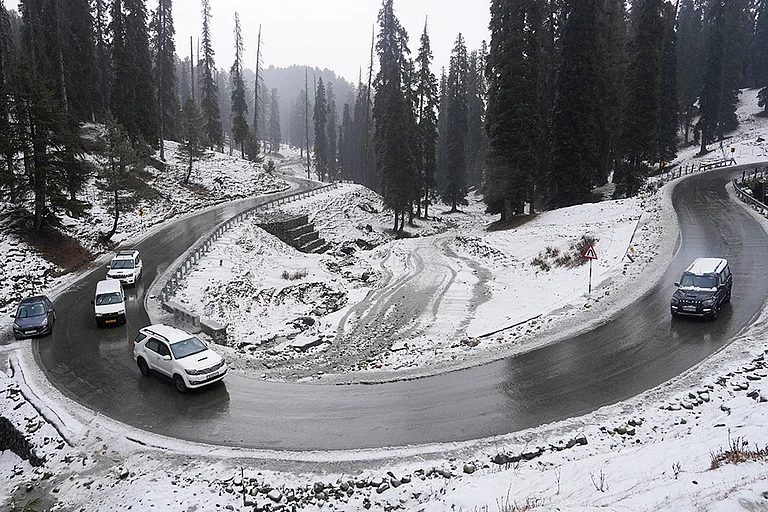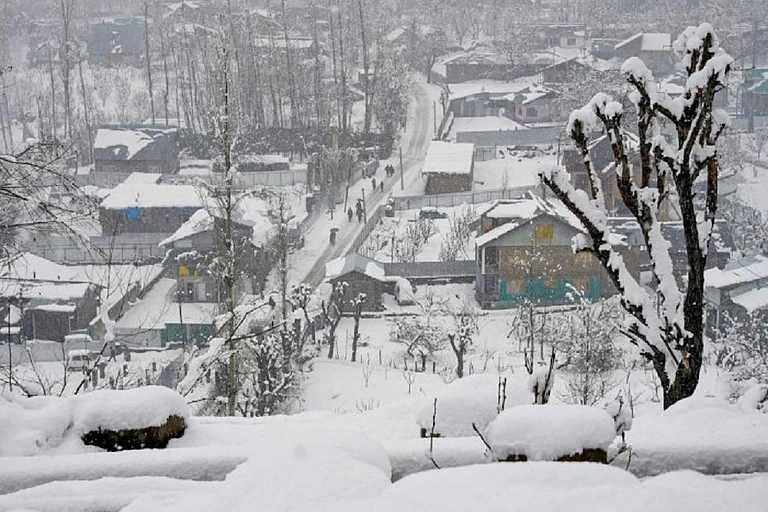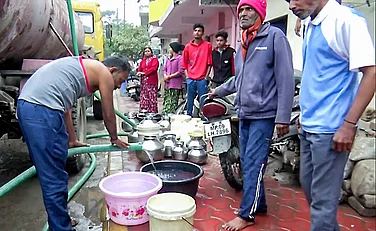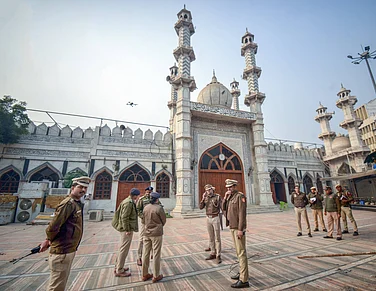At Kangdoori in Gulmarg, at an elevation of 8,530 ft, Brian Newman, an American snow forecaster and snow safety officer for the government of Jammu and Kashmir for the past two decades, was seated in his hut office, his eyes fixed intently on the vast expanse of the Gulmarg ski area. Scores of foreign and local skiers were carving their paths down the slopes as he observed. As we stepped into his office, his demeanour was composed, but upon learning of our journalistic identities, he was visibly taken aback. The death of a Russian skier on February 22, caught in an avalanche triggered by her group in a non-ski area, weighed heavily on his mind.
Newman’s frustration with the media was palpable; he expressed his discontent with the reporting of the incident. What followed was an impassioned discourse on avalanches, particularly those triggered by skiers — a subject he held dear. Newman’s words were charged with sentiment and emotion as he said, “You journalists are part of the problem. You are the problem. Stop this now.”
According to him, misreporting not only fails to provide closure to grieving families but also perpetuates a false sense of danger among the skiers and their loved ones. Then he paused for a moment and agreed to talk. “It is necessary to shed light on the ignorance of what causes such accidents,” he said.
He got up and started looking toward Kangdoori, where people were skiing. “When you hear about an avalanche hitting and killing a skier, it might make their families think avalanches are happening all over the place and their loved ones got caught in it. But the truth is, most avalanches, about 90 per cent of the time, are triggered by skiers themselves in the non-ski area, and unfortunately, they get caught in them,” he said.
In India, it is a novel idea to have a ski area. There is a ski area in Gulmarg which is managed by ski patrol as a ski resort. Its avalanche risk management is done. Newman argued that this avalanche mitigation has been very successful in achieving relative safety from avalanches inside the ski area. “Then the distinction has to be made between the ski area and outside the ski,” Newman said. He began to explain the distinction between the ski area and what lies beyond. He explained that in the skiing lexicon, the area beyond the ski area is called the “backcountry”. “The backcountry is unmanaged terrain outside the ski area, with no avalanche safety measures. We refer to it as wild terrain,” he said.
The risk of avalanches in the backcountry areas is as of those undisturbed areas of snow mountains.
What often occurs is that people visiting Gulmarg from various parts of the world for skiing prefer to explore non-ski areas in the wild terrain for their skiing adventures. Many of them possess extensive skiing experience. Some local Kashmiris have become ski guides, also with significant expertise. They frequently venture beyond the managed ski area into the untamed terrain. But why do they do it?
“They do it because they have invested the time to manage this risk responsibly. They do it with great effect for many many years without having avalanche accidents,” Newman argues. However, Newman’s main contention is that those lacking “exceptional skills” to handle such challenges should refrain from entering these wild areas. He said, “Those who fail to respect the terrain and navigate in it cautiously are the ones who trigger avalanches and, tragically, get caught and killed in them.” This happened with Russian skiers on February 22. On that day, eight skiers triggered an avalanche in backcountry, resulting in the death of one Russian skier, identified as Anton, a resident of Moscow. All others were rescued at the same time.
Skiers venture into backcountry skiing because it offers a different kind of thrill. Newman himself compares it to a drug, watching these passionate people engage in backcountry skiing.
When skiing or snowboarding in wild terrain where avalanches are a risk, it’s important to move cautiously. One approach is to stay on higher ground, like the top of a ridge, to reduce the chances of being caught in an avalanche. While there’s still a risk of triggering one, staying above makes it less likely to get swept away easily. It’s common sense to ski one person at a time if you’re in a group. This reduces the weight of the snowpack. If someone triggers an avalanche and gets caught, the rest of the group, if they’re positioned safely away, can quickly rescue them. “All of these practices contribute to responsible skiing in the wild terrain,” says Newman. He goes back to the February 22 incident saying having all eight skiers, seven Russians and one Kashmiri, on the slope at the same time was dangerous.
In 2007, Newman created a public information service for the Government of Jammu and Kashmir to help skiers in Gulmarg. It gives updates on avalanche risks in the ski area, which are updated regularly. On February 22, the advisory warned about the possibility of a large, destructive avalanche to be triggered by skiers in the backcountry area.
Newman shifted his talk to reporting: “In the news, they often say ‘avalanche hits Gulmarg’, but that’s not accurate. No one has ever died in the ski area. Even in last year’s accident involving two Polish skiers, the reports were highly inaccurate.
“If you look at the news reports about yesterday’s event (February 22), many still believe there are missing skiers who haven’t been found yet. This, again, is highly inaccurate.”
Then he posed another question. “Outside the ski area, who will perform the rescue?” he asked, looking at the reporters. He began to answer his question. “First and foremost, it’s the responsibility of the skiers who are out there,” Newman said. He said that the group skiing in the wild must be capable of rescuing themselves if one or more members get caught in an avalanche. Time is crucial in rescue efforts. They only have seconds and a few minutes to extract a person from the snowpack before it’s too late. “Statistically, it’s no more than 10 minutes,” Newman explained. While ski patrol is primarily responsible for the ski area, they also participate in rescue operations when needed.
Then he revisited the incident of February 22. On that day, the skiers chose to leave the ski area and venture into the wild terrain despite poor visibility. They headed towards an area described in the day’s advisory as dangerous, with clear warnings that a large avalanche could be triggered by skiers there. They disregarded fundamental safety rules, such as travelling one at a time on the slope or in pairs, and instead opted to have all eight skiers on the slope at once. This ultimately triggered the avalanche, which swept down to the ground.
Then he returned to discussing the reporting of the incident. “Anyone in India reading the reports about this incident would think that the entire area of Gulmarg is dangerous,” he said. Describing skier-triggered avalanches as “avalanche struck” or “an avalanche hit” perpetuates ignorance about how avalanches are triggered. “Avalanche struck” implies it’s a random event, which it is not. “It creates the perception worldwide that all of Gulmarg is extremely unsafe, where random avalanches strike from nowhere and nothing can be done about it,” he said.
As we walked out of Newman's room, he left us with this: “Remember to clarify the distinction between the ski area and non-ski area, and don’t make it seem like avalanches just happen out of the blue in Gulmarg.”







